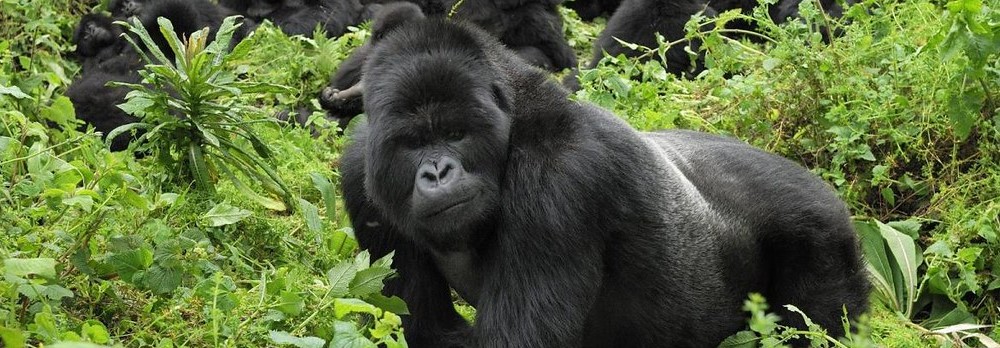Gentle Giants of the Forest
The mountain gorilla is one of the most iconic and captivating creatures on Earth, symbolizing the wild beauty of Africa’s rainforests and the resilience of conservation efforts. These gentle giants, found only in a small corner of the world, have become the centerpiece of unforgettable wildlife encounters and a powerful reminder of the importance of protecting endangered species. For anyone drawn to Africa’s natural wonders, understanding mountain gorillas and their story offers a profound connection to one of nature’s greatest success stories.
What Are Mountain Gorillas?
Mountain gorillas are a subspecies of the eastern gorilla, scientifically known as Gorilla beringei beringei. Unlike their lowland relatives, mountain gorillas live in high-altitude montane and bamboo forests, thriving in cool, misty climates. Adult males, called silverbacks because of the striking silver hair on their backs, can weigh up to 220 kilograms and stand over 1.7 meters tall when upright. Females are smaller but equally fascinating, nurturing their young and contributing to the tight-knit social structure of the group.
Mountain gorillas are known for their intelligence, gentle nature, and strong family bonds. They live in groups led by a dominant silverback, who protects and guides the family. These groups can range from just a few individuals to over twenty members, including females, infants, and subordinate males. Their diet consists mainly of leaves, shoots, fruit, and stems, which they spend much of their day foraging for in the forest.
Where Do Mountain Gorillas Live?
Mountain gorillas inhabit only two regions in the world, both located in East-Central Africa. The first is the Virunga Mountains, a chain of extinct volcanoes spanning Uganda, Rwanda, and the Democratic Republic of Congo. Here, they are protected within Volcanoes National Park in Rwanda, Mgahinga Gorilla National Park in Uganda, and Virunga National Park in Congo.
The second population lives in Uganda’s Bwindi Impenetrable National Park, a UNESCO World Heritage Site known for its dense rainforest and rich biodiversity. Together, these two populations make up just over 1,000 individuals — a fragile but hopeful number that reflects decades of dedicated conservation work.
 Why Are Mountain Gorillas Endangered?
Why Are Mountain Gorillas Endangered?
For much of the 20th century, mountain gorillas were pushed to the brink of extinction due to habitat loss, poaching, disease, and human conflict. Their forest homes were cleared for farming and settlements, while poachers targeted them for bushmeat or captured infants for the illegal wildlife trade. Additionally, their close genetic relationship to humans made them vulnerable to diseases transmitted by visitors and local communities.
Today, thanks to concerted efforts by governments, conservationists, and local communities, mountain gorilla numbers are rising. Regulated ecotourism, anti-poaching patrols, veterinary care, and habitat restoration have all played critical roles in their recovery. Gorilla trekking not only funds these efforts but also provides income for nearby communities, creating incentives to protect these extraordinary animals.
Why See Mountain Gorillas in the Wild?
Observing mountain gorillas in their natural habitat is often described as a life-changing experience. Trekking through misty forests to spend time with a gorilla family is a privilege that leaves a lasting impression, offering a glimpse into the intimate lives of creatures who share over 98% of our DNA. Watching a silverback keep watch, juveniles play, or mothers cradle their babies is a moment of connection with nature that is hard to put into words.
Visiting mountain gorillas also contributes directly to their survival. Permit fees support conservation programs and help ensure that future generations can continue to encounter these magnificent primates in the wild.
The Future of Mountain Gorillas
While their recovery is a conservation success, mountain gorillas remain critically dependent on human care and vigilance. Continued protection of their habitats, support for local communities, and sustainable tourism are essential to their survival. With responsible travel and ongoing conservation efforts, there is hope that mountain gorillas will continue to thrive and inspire for generations to come.
For anyone with a love for wildlife and a spirit of adventure, meeting the mountain gorillas of Africa is more than a holiday — it is a profound encounter with one of the world’s most remarkable creatures.





